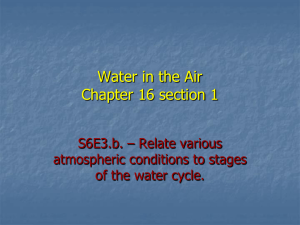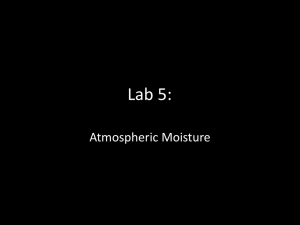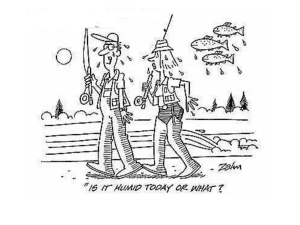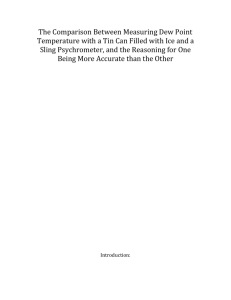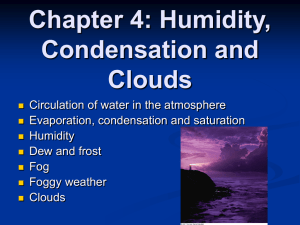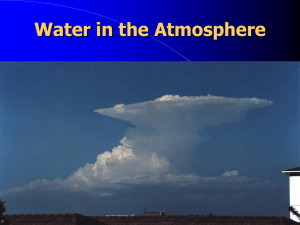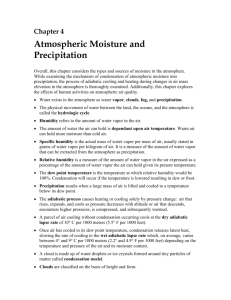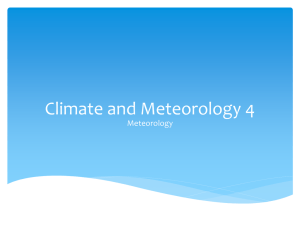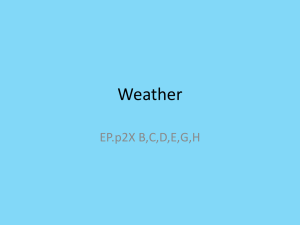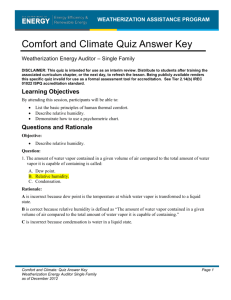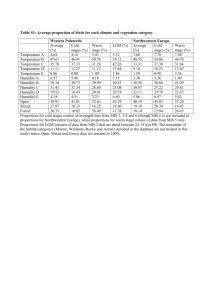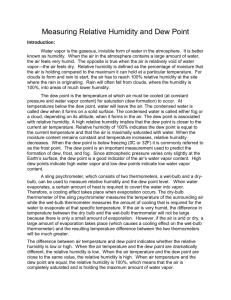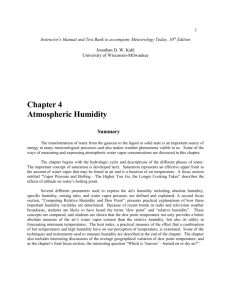Unit 7 Review
advertisement
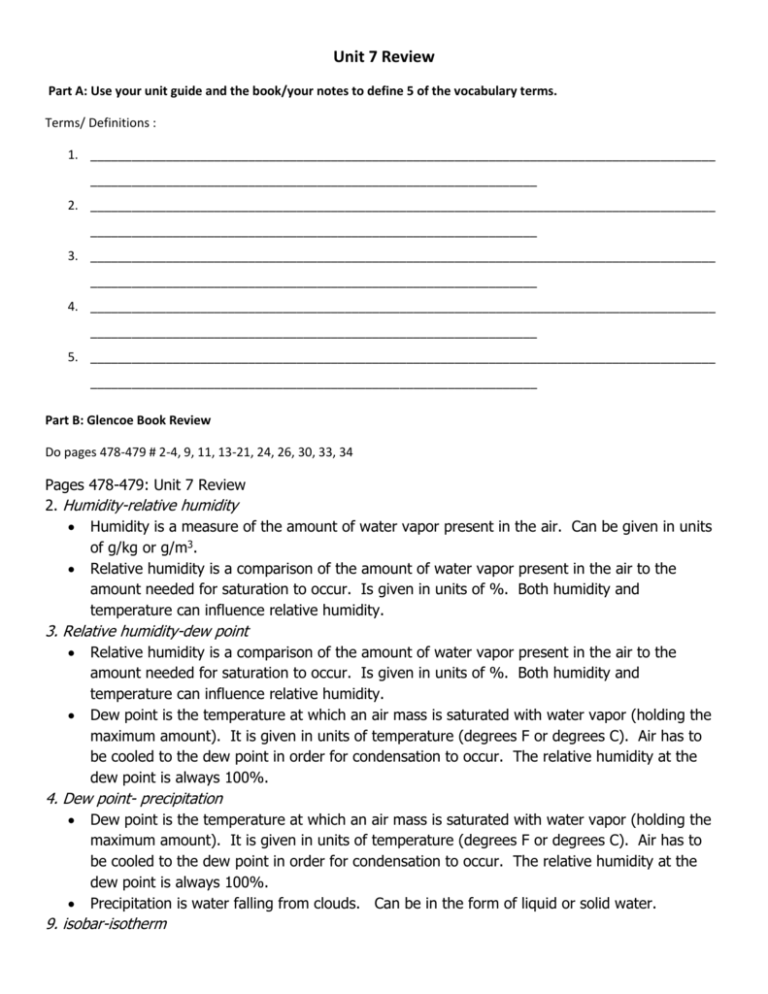
Unit 7 Review Part A: Use your unit guide and the book/your notes to define 5 of the vocabulary terms. Terms/ Definitions : 1. ___________________________________________________________________________________________ _________________________________________________________________ 2. ___________________________________________________________________________________________ _________________________________________________________________ 3. ___________________________________________________________________________________________ _________________________________________________________________ 4. ___________________________________________________________________________________________ _________________________________________________________________ 5. ___________________________________________________________________________________________ _________________________________________________________________ Part B: Glencoe Book Review Do pages 478-479 # 2-4, 9, 11, 13-21, 24, 26, 30, 33, 34 Pages 478-479: Unit 7 Review 2. Humidity-relative humidity Humidity is a measure of the amount of water vapor present in the air. Can be given in units of g/kg or g/m3. Relative humidity is a comparison of the amount of water vapor present in the air to the amount needed for saturation to occur. Is given in units of %. Both humidity and temperature can influence relative humidity. 3. Relative humidity-dew point Relative humidity is a comparison of the amount of water vapor present in the air to the amount needed for saturation to occur. Is given in units of %. Both humidity and temperature can influence relative humidity. Dew point is the temperature at which an air mass is saturated with water vapor (holding the maximum amount). It is given in units of temperature (degrees F or degrees C). Air has to be cooled to the dew point in order for condensation to occur. The relative humidity at the dew point is always 100%. 4. Dew point- precipitation Dew point is the temperature at which an air mass is saturated with water vapor (holding the maximum amount). It is given in units of temperature (degrees F or degrees C). Air has to be cooled to the dew point in order for condensation to occur. The relative humidity at the dew point is always 100%. Precipitation is water falling from clouds. Can be in the form of liquid or solid water. 9. isobar-isotherm Both are isolines- lines that show equal values on a weather map. Isobars are lines of equal pressure Isotherms are lines of equal temperature 11. Which term refers to the amount of water vapor in the air? c- humidity 13. Which type of air has a RH that of 100% d- saturated 14. Which type of the following clouds are high feathery clouds made of ice crystals? a. cirrus 15. What is a large body of air that has the same properties as the area over which it formed called? a. air mass 16. At what temperature does water vapor in air condense a. dew point 17. Which type of precipitation forms when water vapor changes directly into a solid d. snow 18. Which type of front may form when cool air, cold air and warm air meet? d. occluded- Happens when a cold front catches up to a warm front (see page 464 in your book) 19. Which is issued when severe weather conditions exist and immediate action should be taken? d. warning 20. What is a large, swirling storm that forms over warm, tropical water called? a. hurricane 21. Explain the relationship between temperature and relative humidity. If humidity is kept constant (the amount of water vapor in the air DOES NOT change) then: -If temperature increases, the relative humidity will decrease. This is because warmer air needs more water vapor in order to reach saturation. -If temperature decreases, the relative humidity will increase. This is because cooler air needs less water vapor in order to reach saturation. 24. What does it mean if the relative humidity is 79%? This means that the air is currently holding 79% of the maximum amount of water vapor it can hold (its saturation value). 26. Compare and contrast the weather conditions at a cold front and the weather at a warm front. Both produce clouds and precipitation. Cold front- high winds, large cumulonimbus clouds, brief showers/thunderstorms, dropping temperatures Warm front- extended precipitation events (hours), nimbostratus clouds, rising temperatures 30. You take a hot shower. The mirror in the bathroom fogs up. Infer from this information what has happened. The water vapor in the air due to your shower has condensed on the cooler surface of the mirror. The mirror needs to be at or below the dew point. 33. If the air temp is 25 degrees C and the relative humidity is 55%, will the dew point be reached if the temperature drops to 20 degrees C. Need to use the information on the chart. First have to figure out how much water vapor is actually in the air. You know that it is currently holding 55% of what it can hold. You need to determine what 55% of 22 g/m3 is. Multiply 22 * .55 to find that 55% of 22 is 12.1. By looking at the chart you see that at 20 degrees C, the air has a saturation value of 15 g/m3. Therefore the dew point would not be reached at 20 degrees, because you would still be holding less than the maximum amount of water vapor possible. 34. If the air temp is 30 degrees C and the RH is 60%, will the dew point be reached if the temperature rises to 35 degrees C. No, because the air would be able to hold MORE water vapor at a higher temperature. Therefore the RH would drop. An RH of 100% is needed at the dew point Part C: Map Analysis 1. Make an estimate of the air temperature in Atlanta, GA. 85 degrees F 2. In what direction is the cold front moving in the Western part of the country? How do you know? East. Triangles point in the direction the front is moving. 3. What type of front is in northern Texas? How does this type of front develop? Stationary. A warm front and a cold front meet. Neither is strong enough to overtake the other, so you see no movement. 4. If the warm front continues to move eastward, explain how Washington DC’s weather may be impacted over the next few days. Warmer temperature. Cirrus clouds that would progressively get lower and more sheetlike in the coming days. Extended rain events 5. What type of front will form if the cold front catches up to the warm front? Draw its symbol. Occluded front. Triangles and semi-circles on the same side of the line. 6. What is the wind speed and direction for this station model? 15 knots, coming from the NW, blowing towards the SE


